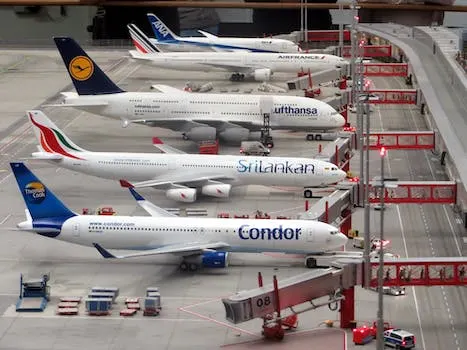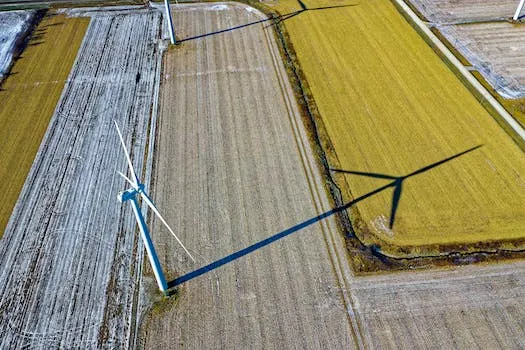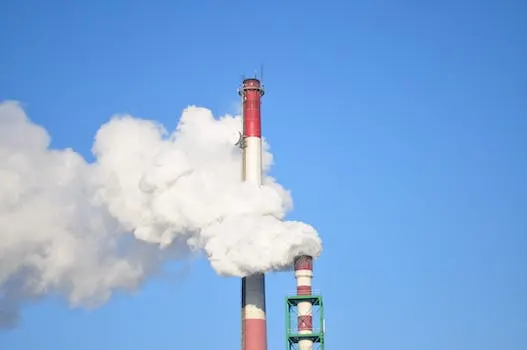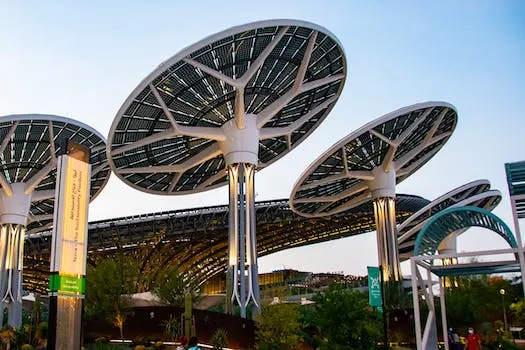
Sustainable Aviation: What the Future Holds
The aviation industry is on the cusp of a revolution. Sustainable aviation has come a long way in recent years, and there is increasing interest in achieving carbon-neutral flight to combat global warming. The Clean Skies for Tomorrow initiative has set ambitious goals to produce enough sustainable aviation fuel (SAF) to meet 100% of jet fuel demand by 2050 and cut greenhouse gas emissions. To achieve this, energy efficiency improvements in aircraft technology and better operations are needed. Additionally, SAF has the potential to significantly reduce carbon emissions for a greener future.
The future of sustainable aviation looks bright as technology, economics, and new global realities combine in ways that are both exciting and challenging. Aviation experts are working hard to ensure that the industry remains low-emission and sustainable going forward. SAFs offer an effective approach towards reducing carbon emissions while still allowing air travel to remain accessible for people around the world.
In order for these goals to be achieved, research into new technologies must continue at an accelerated pace so that they can be implemented quickly across the industry as soon as possible. This includes advancements such as electric aircrafts powered by renewable energy sources or biofuels derived from waste products like cooking oil or agricultural waste materials which could potentially replace traditional jet fuels entirely over time if successful enough on a large scale basis.
The potential of sustainable aviation is immense; it could revolutionize air travel while also helping protect our planet from further damage caused by climate change due its reduced environmental impact compared with traditional methods of transportation such as cars or trains which rely heavily on fossil fuels for their operation . With continued research into new technologies combined with increased public awareness about sustainability issues related to air travel , we may soon see a future where flying becomes more eco-friendly than ever before!
The Current State of Sustainable Aviation
The current state of Sustainable aviation is one that is rapidly evolving. Governments, airlines, and passengers alike are increasingly focused on reducing their carbon footprints, and technological advances have made it possible for the industry to reduce its emissions while also increasing its efficiency. Electric aircraft are a major development in this regard as they use electric motors instead of jet engines and require less fuel than traditional aircraft. This reduces emissions while also making them quieter for passengers. Additionally, some airlines have started using biofuel as an alternative to traditional fuel which has been shown to reduce emissions by up to 80%. The International Civil Aviation Organization (ICAO) has set out sustainability criteria for the production of sustainable aviation fuels (SAF), which can reduce CO2 emissions by around 80% compared with traditional fossil jet fuel. SAF is compatible with current aircraft and infrastructure, depending on the feedstock source used in production. The aviation industry's net-zero carbon emission target focuses on delivering maximum reduction in emissions at source through the use of sustainable fuels such as SAFs or low-carbon alternatives. With these developments in mind, it's clear that sustainable aviation will continue to be a key focus area for governments, airlines and passengers alike going forward into the future.
The Potential of Sustainable Aviation
The potential of sustainable aviation is immense. If the industry continues to focus on reducing its emissions and improving its efficiency, the future looks bright. One of the most promising technologies is hydrogen fuel, which is produced by combining hydrogen and oxygen and can be used to power aircraft. Hydrogen fuel is much more efficient than traditional fuel, producing no carbon emissions, making it an attractive option for airlines as it would allow them to reduce their emissions while still providing a reliable service. Autonomous aircraft powered by artificial intelligence could also revolutionize the industry, reducing the need for human pilots and saving airlines money while cutting their carbon footprint. Finally, supersonic aircraft powered by advanced engines could make air travel faster and more efficient with speeds up to Mach 5 (five times the speed of sound). This could drastically reduce travel time between destinations allowing airlines to offer competitive fares while reducing their emissions.
Sustainable aviation fuels (SAF) are an attractive option for decarbonizing air travel due to their ability to provide large reductions in greenhouse gas emissions with minimal impact on performance or cost compared with traditional jet fuels. Hydrogen fuel has emerged as a more likely solution than SAFs due to its greater efficiency and zero-carbon output when burned in engines or turbines; however, SAFs remain an important part of any long-term strategy for decarbonizing aviation given that they can be blended into existing jet fuels without requiring major changes in infrastructure or technology. The U.S., along with other countries around the world have set ambitious targets for net zero carbon emission from aviation by 2050; this will require significant investment in new technologies such as hydrogen fuel cells as well as further improvements in efficiency through initiatives such as Long Term Aviation Greenhouse Gas Reduction Strategies (LTAG). Such strategies will trigger additional opportunities for programmes focusing on aircraft technologies and operational procedures that can help reduce global aviation's environmental impact even further over time. Ultimately, sustainable aviation has great potential if we continue investing in new technologies that enable us to fly cleaner while still providing reliable services at competitive prices - something that everyone involved in this industry should strive towards achieving together!
Conclusion
The future of sustainable aviation is looking bright, with a range of technologies and methods being developed to reduce emissions and improve efficiency. Hydrogen fuel, sustainable fuels, new routes and improved fuel-burn efficiency are all helping to decarbonize the aviation sector. General Electric Aviation is developing an advanced engine propulsion system and advanced acoustic improvements to reduce noise and fuel consumption. Additionally, the ACT-SAF initiative launched in June 2022 will provide opportunities for all ICAO Member States to develop their own Sustainable Aviation Fuels. Finally, sustainable design, innovation and legislation will be essential in achieving a greener future for aviation. With these advancements in technology, the industry has a unique opportunity to make significant progress towards sustainability over the coming decade.










